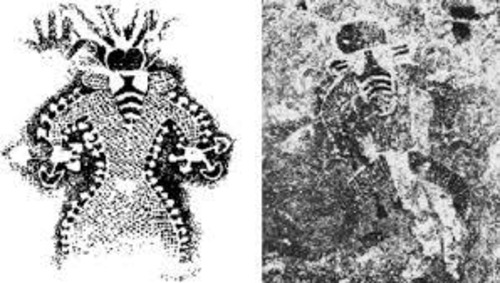History:
Psilocybin

History
The use of psilocybin mushrooms by humans is speculated to date back between 7,000 and 12,000 years, with cave paintings depicting figures holding mushroom-like objects. In 1989, psychedelics researcher Giorgio Samorini proposed that these “fungoid-like” images in the Tassili caves of Algeria provide evidence of an ancient relationship between humans and psychedelics. One significant painting in the Tin-Tazarift rock art site shows a procession of masked, hieratically dressed figures or dancers, each holding a mushroom-like object. Notably, double lines extend from these objects to the heads of the figures, specifically to the base of their horned headdresses. Samorini suggested that these lines might symbolize an immaterial connection or flow between the held object and the mind.
Around 3,500 years ago, the Aztecs were using psychedelic mushrooms in religious rituals, referring to them as Teonanácatl, or “God’s flesh,” and treating them as sacred sacraments.
In 1958, Swiss chemist Dr. Albert Hofmann isolated and named psilocybin from the species Psilocybe mexicana. His employer, Sandoz Laboratories, marketed pure psilocybin to researchers and clinicians for scientific use. However, rising drug restrictions in the 1960s and 1970s halted psilocybin research for decades.